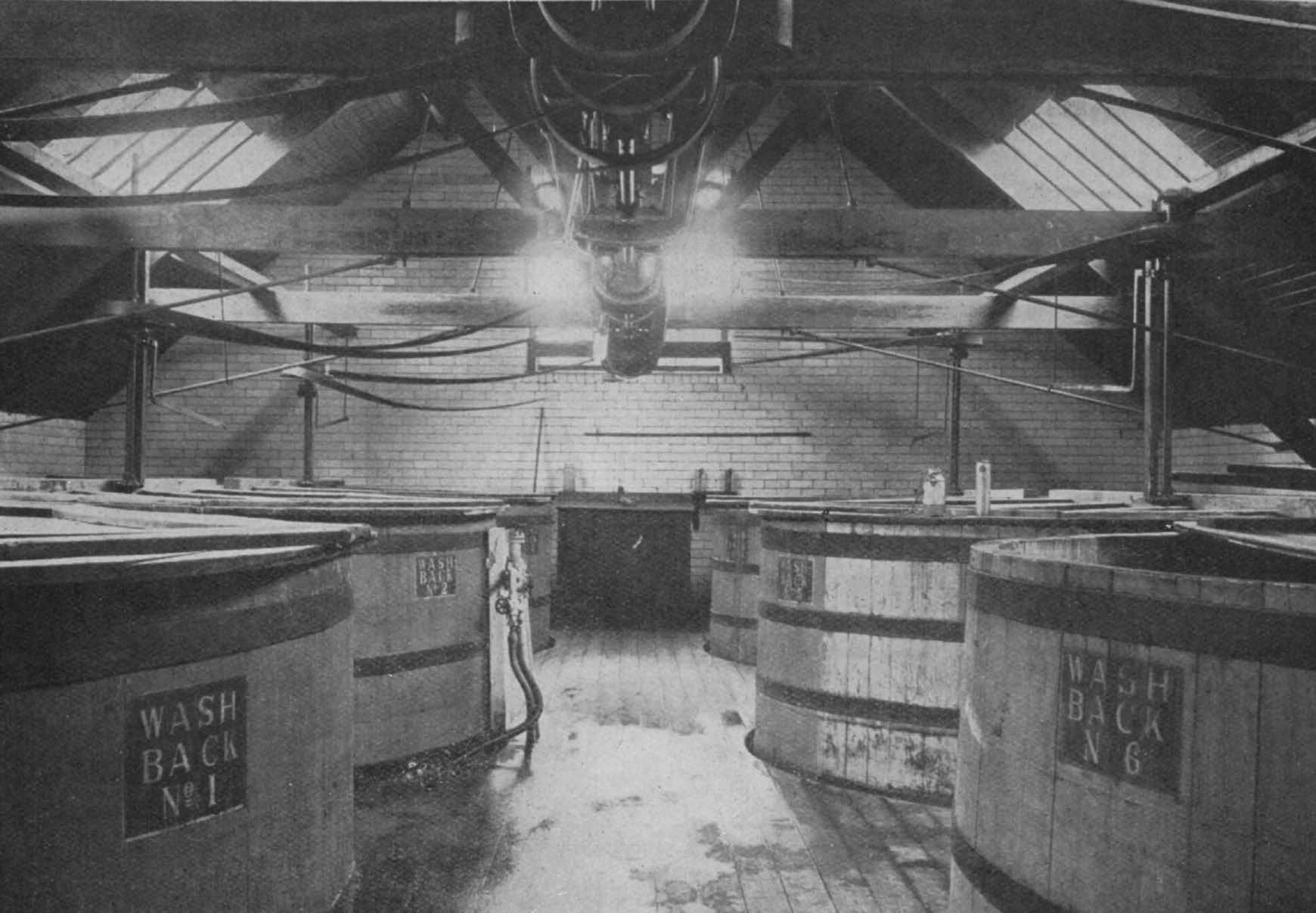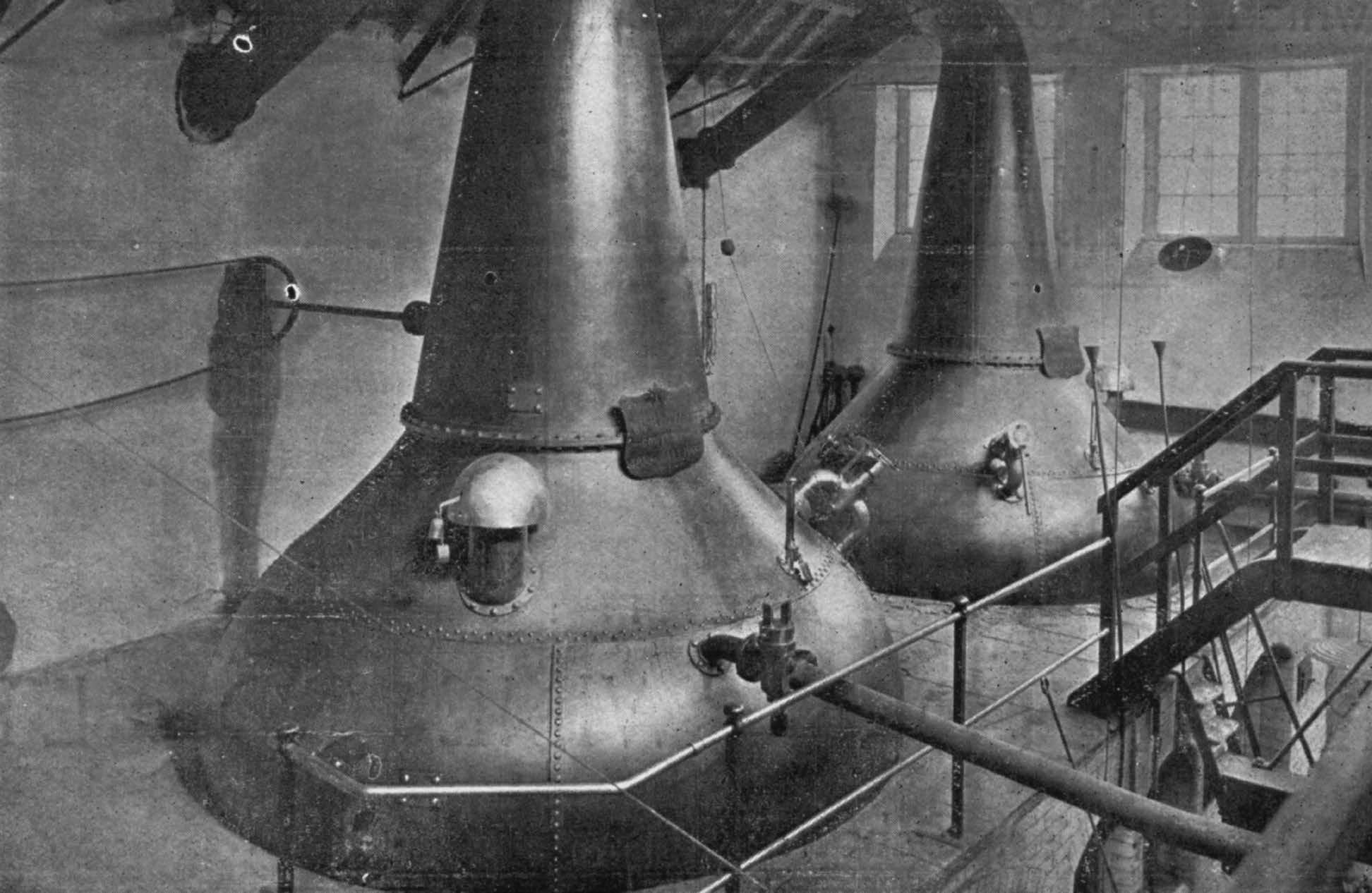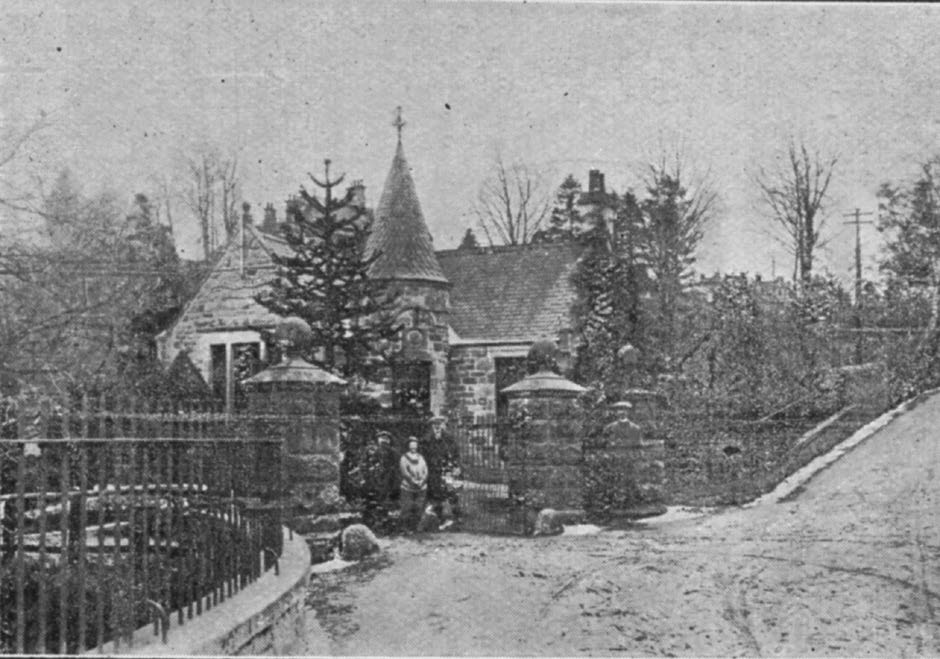IX
Aberlour-Glenlivet Distillery, Aberlour
Mar 14th, 1923
Aberlour is a charming village lying beside one of the most picturesque stretches of the river Spey, at the foot of the towering mountain of Ben Rinnes. On the east shoulder of this mountain runs a spring which gradually forms a small pond near an old cave reputed to have been the hiding-place of James an Tuam, or James of the Hill, a notorious free-booter of the 17th century. Sparkling down heathery slopes from the pond the stream grows in volume, and, before reaching Aberlour, forms a beautiful cascade known as the Lynn of Ruthrie. Around this waterfall, which has a drop of some thirty feet, broken only by a projecting rock, is a knot of graceful pine trees that have a wonderful mellowing effect on the sound of the water as it crashes down towards the Spey, and a quarter of a mile from this spot, in a mossy wooded valley, stands Aberlour distillery.
This establishment was built in the year 1879 by the late Mr. James Fleming, a local benefactor in many ways. The advent of the distillery was naturally a great boon to the population of Aberlour, but apart from this the first proprietor showed exceptional generosity in founding a well-equipped cottage hospital, and providing the community with various other advantages. In the year 1892 the distillery passes into the hands of Messrs. Thorne, of Greenock and London, and in 1920 it was acquired by the present owners, Messrs. W. H. Holt and Sons, Ltd., of Chorlton-cum-Hardy, whose “Imperial Liqueur,” “Northern Heights,” and “Three Dukes” blends are well known throughout the trade.
At the entrance to the tree-lined avenue leading to the works is the quaint little office resembling the lodge of a mansion house, although a passing lady tourist once confidently pointed it out to her companions as an “episcopal chapel”! A few yards from the distillery itself is an ancient well, known as “St. Durstan’s Well,” actually used, according to local tradition, by a follower of St. Columba. It is interesting to note that a child was baptised at this well some years ago – a ceremony probably without precedent in the grounds of a distillery. Above the premises is the local manse, so that, as the manager remarked, the immediate neighbourhood has a good blending of spiritual influences.
Aberlour Distillery was the scene of a disastrous fire in 1898, but the works were entirely rebuilt in the same year. The maltings comprise a three-storeyed building, the top floor being used as a barley loft, the second floor for malt and barley, and the ground floor entirely for malt. Barley is brought from the Great North of Scotland Railway’s station a quarter of a mile distant, and elevated in the usual manner to the loft. There are three steeps, each containing from 35 to 40 quarters at a time, and for drying the malt a wire-floored kiln with furnace controlled by a King’s patent regulator. As at other distilleries in the neighbourhood, a mixture of peat and coke comprises the fuel. Grinding is performed by one of the time-honoured two-roller mills.
The mash-house is a spacious room, with all the usual up-to-date appliances, including a draff-drag for removing draff direct to carts outside the premises. Some 1,800 bushels of malt are mashed each week, yielding an output of more than 4,000 gallons of Aberlour-Glenlivet pure Highland Malt Whisky.
The tun-room, with six large wash-backs and switching plant, is a wide and clean building, suitable in every way for the process of fermentation; and the still-house contains two comparatively new stills, both heated by furnace. The wash-still holds 4,688 gallons, and the low-wines still has a capacity of 3,000 gallons. Three steam engines and a water wheel supply power for all purposes.
Among numerous improvement effected by the present proprietors was the erection of an additional warehouse, and there are now seven of these buildings.
The disposal of effluent has long been a thorn in the sides of the distillery managers in the district, for the Spey fishing interests are most jealously guarded. Proprietors of distilleries on the sea-coast perhaps fail fully to realise their good fortune in being free from this problem. At Aberlour Distillery the effluent from various sources is pumped on to a series of filter-beds situated behind the premises. These beds are chemically treated with bacteria which thoroughly purifies the waste liquids before they are allowed to enter the Spey by way of the Lour burn, flowing past the premises.
Images © The British Library Board









